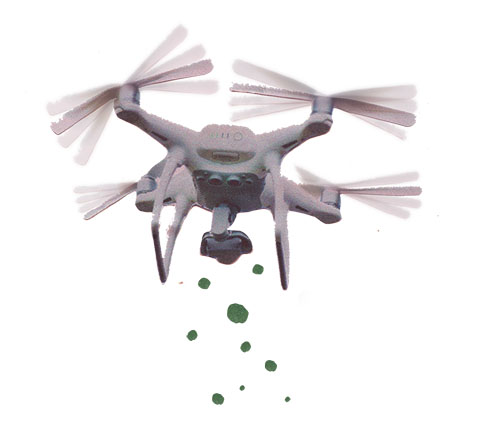Target 2 of the Kunming-Montreal Global Biodiversity Framework calls for approximately 1 billion hectares of degraded land worldwide to be under effective restoration by 2030—just five years from now. While there is considerable optimism and passion supporting this ambitious global target, the financial costs and feasibility of ecological restoration significantly influence whether it can be achieved.
The problem is that restoration is expensive. Extensive research is often required to make informed decisions about where to implement specific actions, and labour-intensive processes such as native species revegetation plantings are typically needed. Restoration also requires long-term commitment and maintenance to ensure the success of ecological recovery efforts, further adding to costs.
To answer the global call for restoration, new technologies that are both cost-effective and scalable are required to help ease the burden on the restoration industry. One such technology—the use of drones—has increased in popularity in recent years and can be used across many aspects of the restoration journey. For instance, there are drones that are capable of dispersing large quantities of seed, enabling revegetation across difficult-to-access and remote terrains.
Although this new method offers the promise of scaling up restoration while alleviating labour costs, how does it compare to more well-established planting approaches?
Practitioners and policymakers planning for restoration urgently require guidance on how to accurately forecast restoration costs to help make decisions about what actions to implement, and where. However, comparisons of restoration costs are often limited and poorly documented. This makes it difficult to predict the potential costs of any given action. Each project is unique, with varying contexts (such as site remoteness, country and currency), requirements (such as maintenance needs, method of implementation) and scales, all of which influence overall costs.
Our research has developed a new, one-of-a-kind framework that allows for flexible yet consistent cost reporting to enable practitioners to equitably compare restoration methods. We demonstrate the application of our framework using a case study where we compare two restoration planting methods: 1) revegetating with native seedlings grown in a nursery, and 2) using planting drones to conduct seeding. We then compared variation in components of costs between both planting methods, and investigated how total costs varied with context and scale by populating our restoration case study costs across small (1 hectare), medium (10-100 hectares) and large (1,000 hectares) projects.
We showed that both methods exhibit economies of scale where the per-hectare change in cost relative to a 1-hectare planting decreased with each increase in scale. However, the economies of scale were greater for drone seeding. This finding was attributed to the higher costs required to propagate tubestock—young plants that are usually between 5–15 cm tall and ready for planting—in a nursery compared to seeds, resulting in higher consumable costs. Additionally, labour time and associated costs were higher for seedling plantings because the number of staff required to undertake a planting was greater compared to drone-facilitated plantings.

Our framework allows conservation managers to consider costs as well as project feasibility, such as labour time and project team availability, when planning a restoration project and selecting the correct planting methods that are suitable in the context of their project.
While our study focused on the costs of restoration, this is only half the story; different methods of planting may deliver different benefits over time. We also considered the potential benefits of each method using literature and theory. We expect that seedling plantings typically result in restoration benefits earlier in a project—plants mature two to five years earlier—compared to seed-based plantings. Depending on a project’s objectives and timeframes for delivering conservation benefits, this can help managers consider cost-effectiveness as a measure of both costs and benefits.
Our research demonstrates that drone-facilitated seeding is an important asset to the restoration community and can be combined with more interventionist methods such as seedling plantings to deliver large-scale revegetation plantings. More over, our cost reporting framework provides the context and clarity required by practitioners and funders to make complex financial decisions when planning for the restoration of ecosystems.
Further Reading
Andres, S. E., C. H. Mills, R. V. Gallagher and V. M. Adams. 2024. A framework for ecological restoration cost accounting across context and scale. Biological Conservation 295: 110671. https://doi.org/10.1016/j.biocon.2024.110671.







